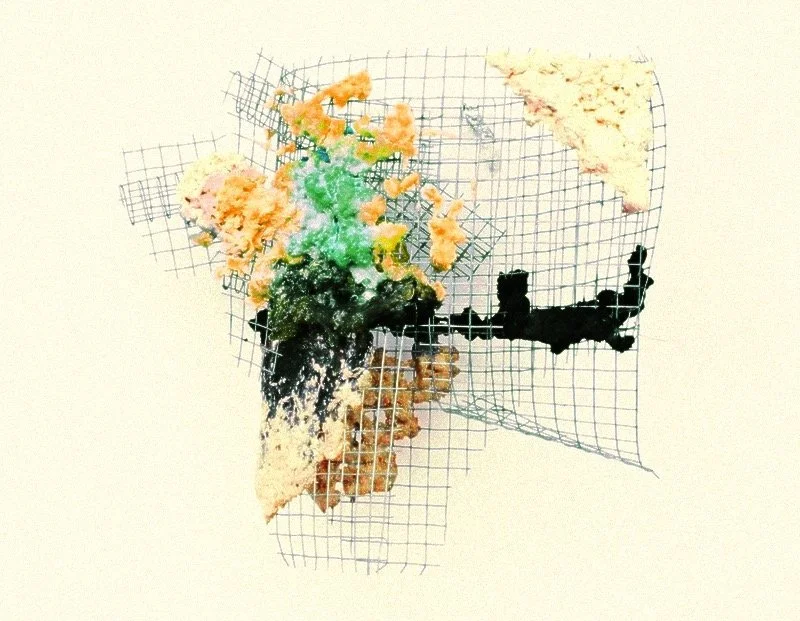Cover Image Tuttle R, The Place In The Window II (2013)
His work and his perspectives activate you to look at materials and society uniquely. He uses alternative, humble materials and makes them interesting. Sometimes cool, sometimes pretty, sometimes weird, sometimes “why”!?!
There is a detachment from the historical exemplars. A re-education or a liberation from the conventional themes. It puts you in the present moment when you look at these recognisable and throw away materials for how they communicate in that space, in that time, in that place.
Taken out of their usual recognisable context they transform from junk to a different plane. Encouraging you to have a personal experience exempt from what you think you know about these materials.
There is a critics view about how these different objects relate and work alongside each other. What reactions they invoke. But I’d like to surpass the technicalities and explore the deeper ocean of influences that support and float these often gentle works on their surface.
UNPACKING THE ARTIST TO UNDERSTAND THE WORK
The history of the artist is often as interesting as their work. They are people living outside of systematic thinking. And not always obviously so. Some wear the uniform of kookiness like flag flying pioneers, and some hide their unique thought patterns behind the veil of school runs and sensible coats. But scratch the surface and swarms of interesting facts sting your mind to life and wonder.
It is a necessary connection to make, as not all art is pretty. It’s often unsettling and complex, and makes you feel like you have some sort of stunted brain activity because you can’t get into the ooo-ing and ahh-ing over a carrier bag pinned to the wall.
Richard Tuttle is very generous in his explanations, and he gives you more than just technical theories to unravel his work. His commentary opens up your psychological pathways, and creates an opportunity for you to have an analogous experience with his art.
For the artist it begins with a responsibility to the challenge of being an artist.
Richard Tuttle speak interestingly about how this begins in childhood. The first moment of realisation that you see things differently to your friends and family. And that there is a loss of innocence to creating art. As a child you have to navigate those feelings alone.
From that early realisation of self discovery, the artist must gather knowledge and resources away from teachers and institutionalised thinking.
There is a misunderstood harmony between conventional society and the left field thinking artists. Art has a role that is invisible to most, and Richard Tuttle has a thought-provoking theory that society has to invent a system that produces freedom. Art is one of the “freedoms” that can do something that society can’t do by it’s own inherent nature.
An artist creates something (away from social acceptance) and someone else (another social misfit) gets excited by it. They put the work into the system – through media, galleries, etc and it gets drip fed to the public. It is a necessity to mankind to remain awake, challenged, and resistant to the robotic rut of conventional society.
Richard Tuttle liberates everyday, mundane objects by decorating them, celebrating them, and repositioning them, in a gallery setting and in our minds. And although we may push against this, (because it is a self protective act to safeguard our routine natures) it is an act of emancipation to accept alternative viewpoints.
Cover Image
Tuttle, R. (2013) The Place In The Window II. [Wire, mesh wall sculpture, photo edited with Hipstamatic].
Bibliography
Richard Tuttle Interview – Artists Are Like Clouds (2014) [YouTube Video] At:https://www.youtube.com/watch?v=EEoZpS4AWLw (Accessed 01/02/2024).
